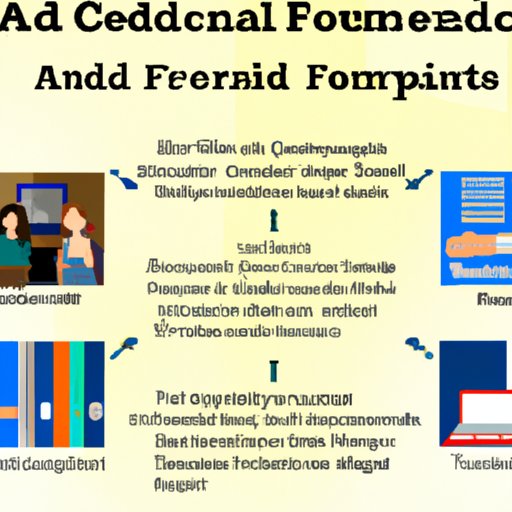Introduction
College is an invaluable investment in your future, but it can come with a hefty price tag. Fortunately, there are several forms of financial aid available to help you pay for college. Knowing what types of aid are available and how to maximize your aid package can help you make college more affordable.

A Comprehensive Guide to College Financial Aid
Financial aid can be confusing and overwhelming, but it doesn’t have to be. Below is a comprehensive guide to college financial aid that will help you understand the different types of aid and how to maximize your aid package.
How to Maximize Your College Financial Aid Package
The first step to maximizing your college financial aid package is to research and apply for as many scholarships, grants, and other forms of assistance as possible. Start by researching scholarships and grants offered by your school and any outside organizations. Additionally, explore any work-study opportunities available at your school. Finally, speak to your school’s financial aid office to discuss your options.
Exploring the Different Sources of College Financial Aid
Once you’ve determined which scholarships, grants, and work-study programs you’re eligible for, you’ll need to explore other sources of financial aid. These include federal and private student loans, parent PLUS loans, and other loans. It’s important to compare interest rates and repayment terms before taking out any loan, as this can help you save money in the long run.

Types of Financial Aid for College Students
There are four main types of financial aid available to college students: grants, loans, scholarships, and work-study. Each has its own set of benefits and drawbacks, so it’s important to understand the differences between them before making a decision.
Grants
Grants are a type of financial aid that does not need to be repaid. Grants are typically awarded based on financial need and academic merit, and they are often provided by state and federal governments. For example, the Federal Pell Grant is a popular grant program for low-income students.
Loans
Loans are a type of financial aid that must be repaid with interest. Federal and private student loans are the most common types of loans, and they can be used to cover tuition, room and board, books, and other college expenses. It’s important to be aware of the interest rates and repayment terms associated with each loan before taking one out.
Scholarships
Scholarships are a type of financial aid that does not need to be repaid. Scholarships are typically awarded based on financial need, academic merit, or special talents, and they are often provided by schools, businesses, and other organizations. It’s important to research and apply for as many scholarships as possible to maximize your financial aid package.
Work-Study
Work-study is a type of financial aid that allows students to work part-time while enrolled in school. Work-study jobs are typically on-campus positions, and they allow students to earn money while gaining valuable work experience. Work-study is a great way to supplement other forms of financial aid and reduce the amount of loans you need to take out.
Calculating the Cost of College and Understanding Financial Aid Eligibility
When applying for financial aid, it’s important to understand the cost of attendance and the various components of financial aid eligibility. The following sections will provide an overview of these topics.
Cost of Attendance
The cost of attendance (COA) is the total cost of attending a college for one year. This includes tuition and fees, room and board, books and supplies, transportation, and personal expenses. The COA varies from school to school, so it’s important to research the COA of each school you’re considering before applying for financial aid.
Expected Family Contribution
The expected family contribution (EFC) is the amount of money that your family is expected to contribute towards your college costs. Your EFC is calculated using information from your Free Application for Federal Student Aid (FAFSA). The lower your EFC, the more likely you are to qualify for financial aid.
Financial Need
Financial need is the difference between the cost of attendance and the expected family contribution. It’s important to understand your financial need when applying for financial aid, as this will determine how much aid you’re eligible for.
FAFSA
The FAFSA is the Free Application for Federal Student Aid. This application is required for all students who wish to receive federal student aid. Completing the FAFSA is the first step to applying for financial aid, and it’s important to do so as early as possible.
Conclusion
Financial aid is an invaluable resource that can make college more affordable. By understanding the different types of aid available, researching and applying for scholarships and grants, and completing the FAFSA, you can maximize your college financial aid package and make college more affordable.
(Note: Is this article not meeting your expectations? Do you have knowledge or insights to share? Unlock new opportunities and expand your reach by joining our authors team. Click Registration to join us and share your expertise with our readers.)
